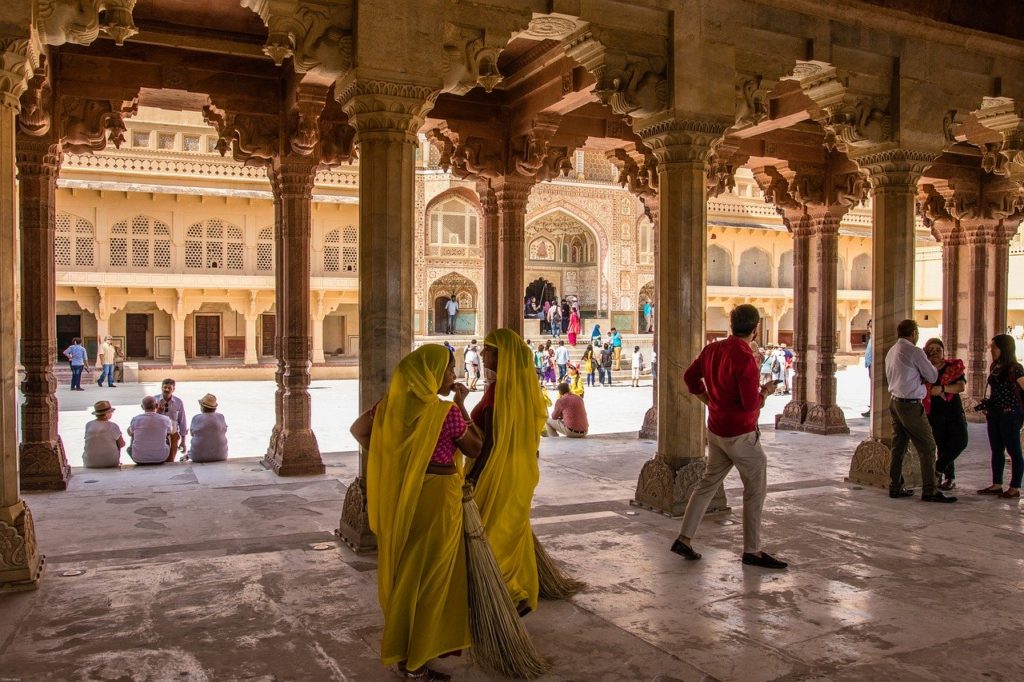
New Delhi has nuclear weapons but is unable to electrify its entire territory. Under these circumstances, will India be able to establish itself as a great power on the international stage?
Over the next ten years, India is likely to be confined to a regional power role because it is a paper tiger and due to its relations with its neighbors.
The Assets of an Emerging Great Power
India possesses several assets that suggest it could become a great power in the short term.
Nuclear Power. New Delhi acquired nuclear weapons in 1998. It is believed to have around 100 nuclear warheads, bombers, and a nuclear-powered submarine (with a second one under construction).
Stable Political Regime. India is known as the “world’s largest democracy.” It manages to have 900 million voters in a stable system since 1947. However, the ruling party of Narendra Modi exploits religious divisions, which can sometimes lead to violence.
Desire for Power. India has a genuine desire for power. It has a prestigious past and sees itself as a great power. For instance, it attempted to send a probe to the Moon in July 2019.
However, India’s desire for power faces structural obstacles.
Limitations to India’s Power
Certain successes should not obscure the real limitations to India’s ambition for power.
An Illusory Economy
Although India shows a growth rate of 7%, higher than China’s, and has risen to the 6th largest economy globally, just ahead of France, it still faces deep challenges. The country struggles to feed its population. One in two children suffers from malnutrition. India needs to integrate 12 million new entrants into the labor market each year, requiring an 8% growth rate. Inequalities are increasing, and 20% of the population lives on less than $2 a day. Furthermore, South Asian economies are poorly integrated regionally: India’s trade with its neighbors accounts for only 2%.
Population and Territory Issues
While the population size (1.3 billion and growing) and territory size are power factors, India struggles to harness this space. Not the entire country is electrified. Additionally, while the population is large, the education system is inadequate, especially in rural areas: some schools lack teachers, and 25% of the population is illiterate. The state of public health is unsatisfactory, with the country spending only 1% of its GDP on health (compared to 11% for France). Some power factors thus become limitations to Indian power.
An Ineffective Military
Although India has nuclear weapons, its armed forces and military-industrial complex are actually underperforming. The Indian army has 1.2 million personnel, but its equipment is outdated. It is undergoing modernization, but its industrial and technological defense base cannot supply the needed equipment. As a result, India is the world’s largest arms importer, acquiring Scorpene submarines and Rafale jets.
Limited Soft Power
While India is known for its cuisine, yoga, and especially Bollywood, its diplomatic weight is overall insufficient. Some of its 160 embassies lack ambassadors. Moreover, it lacks a network of cultural centers like the Confucius Institutes or the Alliance Française.
These internal limitations are exacerbated by a contested regional environment.
Read also Is Iran a Democracy?
A Contested Regional Environment that Could Limit India’s Power
Competition in India’s regional environment influences its internal situation and is likely to limit its power expansion in the medium term.
Border Conflicts. India’s borders remain geopolitical issues. China claims Arunachal Pradesh in the Himalayas, and Pakistan claims Kashmir. India has fought several border wars: in 1962 against China, which annexed Aksai Chin; against Pakistan in 1948 (status quo maintained), 1965, and 1971 (India’s victories). Skirmishes occurred in Kargil in 1999, with the latest clashes in 2019. The accession of both countries to the Shanghai Cooperation Organization in 2017 does not seem to have changed the situation.
These border conflicts fuel internal tensions. Kashmir, historically a tension point between Pakistan and India, sees a strong Indian military presence. Riots regularly erupt to protest against troop behavior. Pro-independence movements and jihadist groups have committed attacks (2001 against the Indian parliament, 2019 by Jaish e Mohammed against an Indian barracks). Pakistan supports some terrorist movements to defend its claims and tie down 600,000 Indian soldiers. This region, which requested attachment to India under pressure from Pakistani incursions in 1947, is strategic as it controls the Indus River, crucial for water supply to both India and Pakistan.
Competition with China. The competition between China and India seems to favor China. India’s Look East Policy, with a regional scope, is confronted by the globally oriented Belt and Road Initiative. China’s navy is superior to India’s. Economic competition also heavily favors China: India exports iron to China and imports manufactured goods, reflecting the relationship between a developing country and a developed neighbor. Finally, China firmly opposes India’s access to the UN Security Council.
*
India’s aspirations for power may thus be hindered by its economic development limits and especially by a contested regional environment that weighs on its power policy.
However, the American reaction to the rise of Chinese power could provide India an opportunity to position itself as an important intermediary.
Read also Does trade promote peace?
